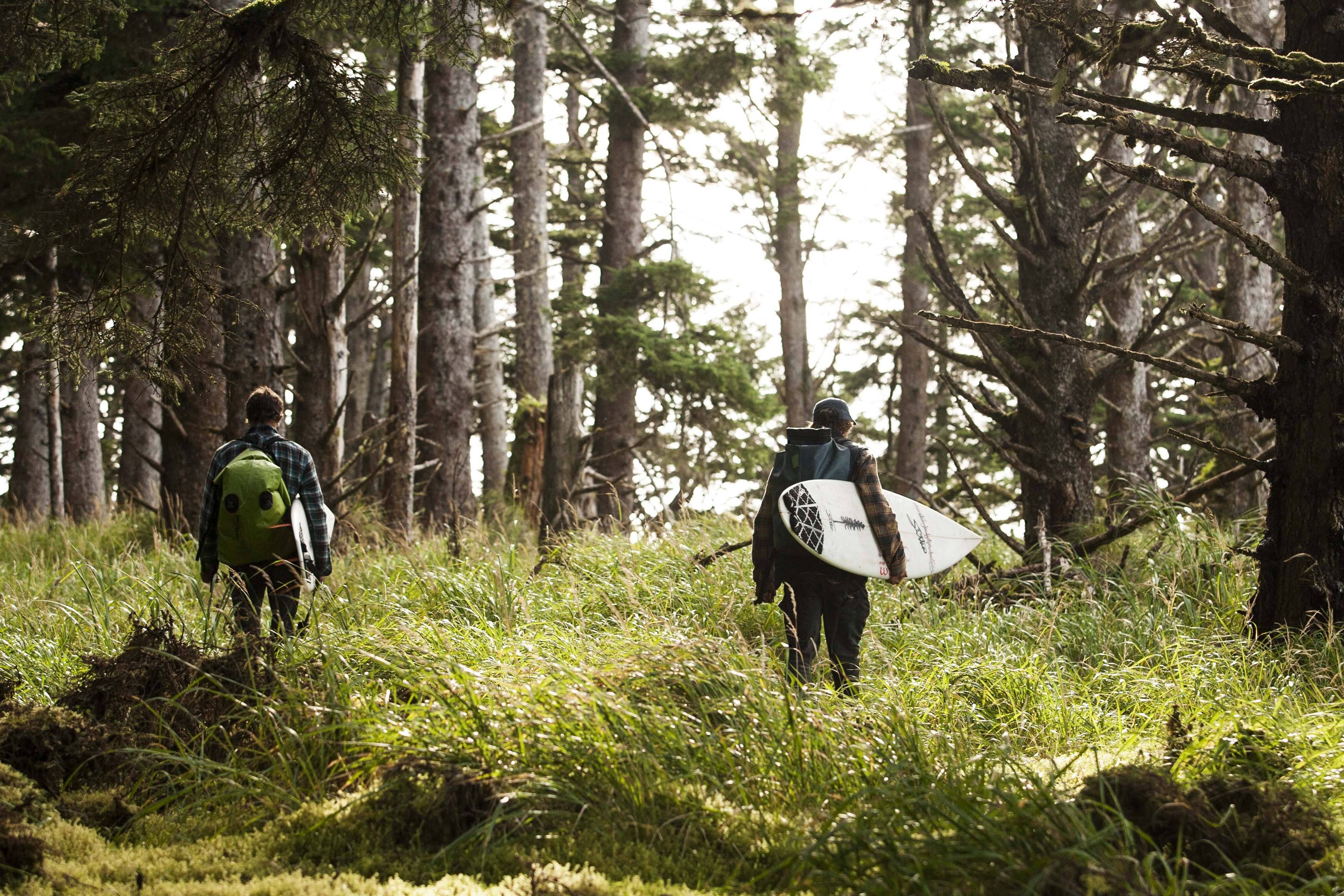
Photo by Natalie Helm |
2016 was recorded as the hottest year on record – ever (yikes).
In January, The Guardian reported that last year the Earth was roughly 1.1 degrees warmer than it was pre-industrial revolution (when people first started to burn large amounts of fossil fuels). Last November, The Guardian also stated that 2 degrees Celsius above pre-industrial temperatures is what scientists consider the threshold for Earth’s safety; anything higher than that could have irreversible consequences (double yikes). . .
Knowing this, we’d be crazy not to factor the environment into our everyday commute. May 29 to June 4 is Bike to Work Week (BTWW) throughout all of BC, and because here at Sitka we don’t just ride waves, we want to convince you to join us in BTWW by downsizing your four wheels for two.
Biking is the most environmentally friendly method of transportation: it doesn’t burn any non-renewable fossil fuels, nor does it emit greenhouses gases.
While doing some light reading from Environmental and Climate Change Canada, we found out that 24% of greenhouse gas emissions in 2015 were due to transportation. What shocked us more is that between 1990 and 2015, the country’s transportation emissions have gone up 42% due to increased traffic on the roads.
It got us thinking, what better way to change this trend than to go green with a fuel-free option like biking? BTWW says that by cycling your way around the city, you can personally prevent roughly 0.2 kilograms of greenhouse gases per kilometre from entering into the atmosphere. And we thought all we were doing was breaking a sweat! Imagine if we all joined in!
To put this into perspective, BTWW participants across BC saved just over 300,000 kilograms of carbon dioxide from polluting the air in 2016. That’s 30,000 trees that would need to be planted in order to capture and store that much pollution over the course of an entire YEAR! British Columbia did that in one week... Talk about (wo)man power.

Photo by Kat Craats
Another thing to consider when evaluating the benefits of biking over driving is the production process. A car contributes more than just pollutants from gas: you have to factor in the petroleum in tires; foam and plastics in seats; the polluted air generated during manufacturing; the hazardous wastes used when painting and coating a car; and even the maintenance of used tires, brake debris, and worn road surfaces. (Jeez, well when you think of it like that...)
Some of you might be thinking, what about hybrids? Well, they produce the same amount of waste as a regular car when manufactured. Plus, the batteries required to power hybrids are known carcinogens and have been proven to cause various teratogenic effects.
Now, we have to confess, bicycles do create some negative environmental impacts during production, too… National Geographic points out that frames and other parts require burning non-renewable fossil fuels, which does produce greenhouse gases and other toxins. And there’s also the fact that a lot of bikes don’t get recycled, potentially ending up in landfills.
However, once made, bikes don’t continue to pollute the environment. And thankfully to used bike shops like Victoria-based Recyclistas, you can invest in a custom-built bike made from used parts to help reduce the waste from old, donated bicycles. They also offer maintenance and repair classes for those who want to learn the skills necessary to upkeep their own bicycle. Plus, places like MEC offer free bike inspections as well as a tire pump up station (free?! We’re in.)
If this hasn’t convinced you, let’s chat about all the dough you’ll save. Buying a bike and keeping it maintained is thousands of dollars cheaper than a vehicle. There’s no added insurance, parking fees, or fuel costs.
Not to mention the health benefits: Public Health Agency of Canada recommends a minimum of two and a half hours of physical activity a week for the average adult. It even lists biking as a perfect, moderate aerobic activity. This can be easily tackled with the 20-30 minute bike route to work each day BTWW says the average cyclist travels (and the 30 calories for every kilometre you peddle). To this I think we can all say in delight, ‘See ya, indoor gym!'

Photo by Kat Craats
Lastly, look at the city we live in: Victoria is a perfect place to bike. We may not be as cyclist friendly as Amsterdam or Copenhagen yet, but we’re certainly making progress thanks to events like BTWW and other lobbyist groups within the area.
One such group is the Greater Victoria Cycling Coalition (GVCC), a volunteer organization that has focused on getting more people cycling more places throughout the capital region since 1991. You can thank them for pushing for Pandora’s new two way biking lanes and for their large contribution to the BikeSense Manual, the safety and operations guide for cycling in British Columbia.
Corey Burger, Policy and Infrastructure Chair for the GVCC, told Sitka that Victoria is a great city to cycle in. Thanks to the small size, the average bike trip takes about only three to five kilometres, which means seventy-five to eighty percent of the trips within the city are short rides.
“Biking will become the dominate mode over the years,” Burger says, “because it’s the easiest way to get from A to B.” It’s cheap, fast, and convenient to do.
However, the most important thing about getting into cycling is just to take that initial step. A simple trip to the coffee shop once per week, or a comfortable route that suits your needs is a great way to start out.
“It’s really about just trying it,” Burger says, “and if you’re at all sort of hesitant as to where to bike that’s the most comfortable, I would encourage you to talk to [the GVCC] or Bike to Work Week.”
We at Sitka would love to see you participate in BTWW. We think every week should be bike to work week! But, we caution you: any exposure to biking has been known to become addictive. National Geographic tells us it's been known to extend lifespans, meaning you'll live longer. Maybe this means you'll leave a longer carbon footprint on our dear Mother Earth, but we think that's a pretty decent price to pay if it means you're helping her out while you're still kickin' around.
So for those of you interested in BTWW (have we convinced you yet?) you can sign up as an individual or as an entire workspace here. Happy pedaling!

Photo by Kat Craats


